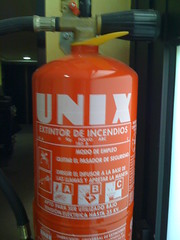

| Main index | Section 9 | Options |
#include <sys/kernel.h>typedef void (*ich_func_t)(void *arg);
The config_intrhook_disestablish() function removes the entry from the hook queue.
The config_intrhook_drain() function removes the entry from the hook queue in a safe way. If the hook is not currently active it removes hook from the hook queue and returns ICHS_QUEUED. If the hook is active, it waits for the hook to complete before returning ICHS_RUNNING. If the hook has previously completed, it returns ICHS_DONE. Because a config_intrhook is undefined prior to config_intrhook_establish(), this function may only be called after that function has returned.
The config_intrhook_oneshot() function schedules a function to be run as described for config_intrhook_establish(); the entry is automatically removed from the hook queue after that function runs. This is appropriate when additional device configuration must be done after interrupts are enabled, but there is no need to stall the boot process after that. This function allocates memory using M_WAITOK; do not call this while holding any non-sleepable locks.
Before root is mounted, all the previously established hooks are run. The boot process is then stalled until all handlers remove their hook from the hook queue with config_intrhook_disestablish(). The boot process then proceeds to attempt to mount the root file system. Any driver that can potentially provide devices they wish to be mounted as root must use either this hook, or probe all these devices in the initial probe. Since interrupts are disabled during the probe process, many drivers need a method to probe for devices with interrupts enabled.
The requests are made with the intr_config_hook structure. This structure is defined as follows:
struct intr_config_hook {
TAILQ_ENTRY(intr_config_hook) ich_links;/* Private */
ich_func_t ich_func; /* function to call */
void *ich_arg; /* Argument to call */
};
Storage for the intr_config_hook structure must be provided by the driver. It must be stable from just before the hook is established until after the hook is disestablished.
Specifically, hooks are run at SI_SUB_INT_CONFIG_HOOKS(), which is immediately after the scheduler is started, and just before the root file system device is discovered.
| CONFIG_INTRHOOK (9) | March 8, 2021 |

| Main index | Section 9 | Options |
Please direct any comments about this manual page service to Ben Bullock. Privacy policy.
